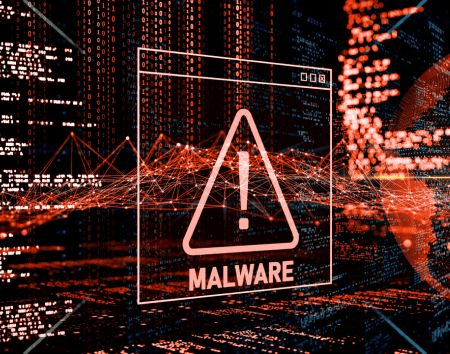
How can organizations develop an effective ransomware response plan?
How to Develop an Effective Ransomware Response Plan for Your Organization
In today’s digital landscape, ransomware attacks are one of the most dangerous cybersecurity threats facing organizations of all sizes. From small businesses to global enterprises, ransomware can cripple operations, lock critical data, and demand costly ransoms for recovery. According to industry reports, ransomware damages are projected to cost businesses billions annually—a staggering reminder that cyber resilience is no longer optional.
The good news? With a well-designed ransomware response plan, organizations can prepare for potential attacks, minimize the damage, and recover quickly without falling victim to extortion. This guide explores the key components of a robust ransomware strategy, offering practical steps to help businesses strengthen defenses and respond effectively.
What Is Ransomware and Why Does It Matter?
Ransomware is a form of malicious software (malware) that encrypts files and systems, rendering them inaccessible until the victim pays a ransom—usually in cryptocurrency. Attackers often deliver ransomware through phishing emails, compromised websites, or software vulnerabilities.
The impact can be devastating:
-
Operational disruption: Systems may go offline for hours, days, or even weeks.
-
Financial loss: Beyond ransom payments, organizations face downtime, lost productivity, and recovery costs.
-
Reputation damage: Clients and partners may lose trust if sensitive data is exposed.
-
Regulatory penalties: Data breaches can trigger legal consequences and fines.
Recognizing the scale of these risks is the first step in building an effective ransomware incident response plan.
Why Every Business Needs a Ransomware Response Plan
A ransomware response plan is more than just a backup strategy. It’s a comprehensive framework that covers:
-
Prevention – steps to reduce the likelihood of an attack.
-
Detection – processes to identify suspicious activity quickly.
-
Containment – actions to isolate infections and prevent spread.
-
Recovery – restoring systems and resuming normal operations.
-
Post-incident analysis – learning from attacks to improve resilience.
Without a plan, organizations risk chaos and delays during a crisis, which often results in higher costs and more extensive damage.
Building a Cyber Resilience Strategy
Cyber resilience means preparing not only to defend against ransomware but also to recover rapidly when attacks occur. Key elements include:
1. Conduct a Risk Assessment
-
Identify your critical assets: financial systems, intellectual property, client records.
-
Assess vulnerabilities in networks, applications, and processes.
-
Prioritize protection for assets that, if compromised, would cause the greatest damage.
2. Implement Strong Security Controls
-
Deploy firewalls, intrusion detection systems, and next-generation antivirus.
-
Use endpoint detection and response (EDR) to spot ransomware behaviors.
-
Apply security patches promptly to close vulnerabilities.
3. Employee Awareness and Training
-
Train staff to recognize phishing emails, suspicious links, and malicious attachments.
-
Simulate phishing attacks regularly to test readiness.
-
Encourage a “see something, say something” culture for quick reporting.
By proactively identifying risks and fortifying defenses, organizations can significantly reduce ransomware exposure.
The Essential Ransomware Incident Response Plan
An incident response plan for ransomware is a structured approach to handling attacks. It defines who does what, when, and how during a cyber crisis.
Step 1: Preparation
-
Develop clear policies and procedures.
-
Establish an incident response team with defined roles.
-
Keep an updated contact list of IT staff, executives, legal advisors, and external cybersecurity partners.
Step 2: Detection and Analysis
-
Monitor systems for unusual activity such as sudden file encryption, spikes in CPU usage, or disabled security tools.
-
Use SIEM (Security Information and Event Management) tools to analyze logs and alerts.
-
Confirm if ransomware is present and determine its scope.
Step 3: Containment and Eradication
-
Isolate infected devices from the network.
-
Disable shared drives to prevent further spread.
-
Remove malicious files and disable the attacker’s persistence mechanisms.
Step 4: Recovery
-
Restore systems from offline or cloud backups.
-
Validate the integrity of restored data before resuming operations.
-
Communicate clearly with employees, customers, and stakeholders.
Step 5: Post-Incident Review
-
Conduct a debrief with the incident response team.
-
Document the timeline, decisions made, and effectiveness of response.
-
Update policies and train staff on lessons learned.
Proactive Measures to Minimize Ransomware Damage
Mitigation is about reducing the potential impact of ransomware before it strikes.
Regular Data Backups
-
Perform frequent backups of mission-critical data.
-
Store backups offline or in secure cloud environments, not just on the same network.
-
Test backups regularly to confirm successful restoration.
Patch and Vulnerability Management
-
Keep operating systems, software, and devices updated.
-
Automate patch management where possible.
-
Prioritize updates for systems exposed to the internet.
Strong Access Controls
-
Enforce the principle of least privilege (PoLP).
-
Require multi-factor authentication (MFA) for all remote access.
-
Review user permissions regularly and remove unnecessary access.
Creating a Ransomware Response Plan Template
Having a response template ensures a consistent, structured approach. Core elements include:
-
Contact Information: Key team members, cybersecurity partners, insurers, and legal counsel.
-
Communication Plan: Internal updates for employees and external notifications for regulators, customers, and law enforcement.
-
Incident Playbook: Step-by-step actions for detection, isolation, eradication, and recovery.
-
Legal & Regulatory Guidance: Procedures for compliance with GDPR (what is GPDR ?), HIPAA (what is HIPAA ?), or local data protection laws such as the Privacy Act in Australia (what is the Privacy Act ?).
Testing and Refining the Ransomware Plan
A plan is only as good as its execution. To ensure effectiveness:
-
Run tabletop exercises simulating a ransomware outbreak.
-
Test technical recovery steps, such as restoring from backups.
-
Involve executives, IT staff, legal, HR, and communications teams.
-
Update the plan based on gaps or delays identified during exercises.
Regular testing builds confidence and ensures your team reacts decisively under pressure.
Collaboration and Threat Intelligence Sharing
Ransomware groups evolve constantly. Staying ahead requires information sharing with peers and cybersecurity networks.
-
Join industry ISACs (Information Sharing and Analysis Centers).
-
Subscribe to threat intelligence feeds.
-
Collaborate with government cybersecurity agencies and law enforcement.
By learning from real-world attacks, organizations can adapt defenses and anticipate threats.
Preventing Ransomware Attacks: Best Practices
While response is critical, prevention remains the best defense.
-
Employee Education: Regularly train staff to spot phishing attempts.
-
Network Segmentation: Divide networks into zones to contain ransomware spread.
-
Zero Trust Architecture: Assume no user or device is trustworthy until verified.
-
Regular Security Audits: Evaluate compliance with cybersecurity policies.
-
Email Filtering: Block known malicious senders, links, and attachments.
Final Thoughts
Ransomware is one of the most significant cybersecurity threats of our time. But with a comprehensive ransomware response plan—including prevention, detection, containment, and recovery—organizations can dramatically reduce risks and maintain business continuity.
Regular training, system hardening, collaboration, and proactive testing all play vital roles. Ultimately, resilience comes from preparation.
At BIZ-LYNX Technology, we partner with businesses to build strong defenses against ransomware, phishing, and other cyber threats. From staff training and security audits to incident response support, our team helps organizations stay one step ahead of attackers.
Ready to strengthen your ransomware defenses? Contact us today to discuss how we can help secure your business.







